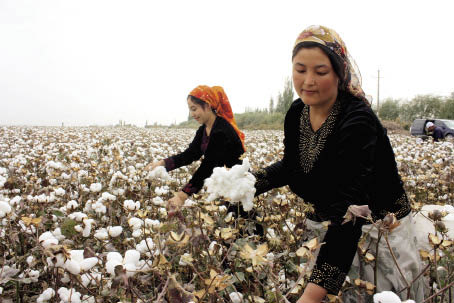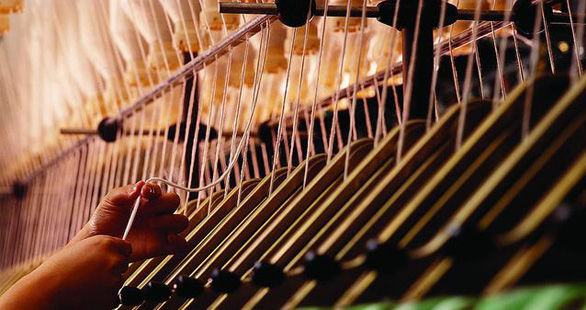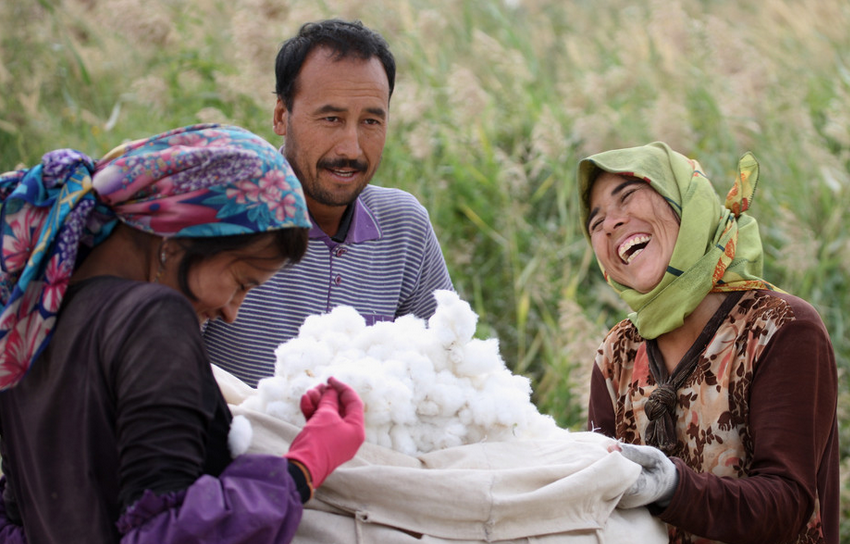Recent survey report shows that in 2017 the national cotton acreage increased year on year, is expected to reverse the decline in cotton area for five consecutive years the trend. In 2016, the cotton-growing area of the Yellow River valley was better than that of corn and soybean, but lower than that of pepper and garlic, so the enthusiasm of planting cotton increased slightly, up by 1.41% year-on-year. Cotton production in the Yangtze River Basin since the sowing weather conditions are poor, in some areas affected, yield decline, quality declined, but the cotton purchase price is higher than last year, cotton farmers enthusiasm has picked up. So planting enthusiasm has also increased slightly, up 3.53%. It can be seen from the above results, in 2017 the national cotton area increase will be a high probability event.

In recent years, due to factors such as price, domestic cotton planting experience Waterloo, not only a substantial reduction in area, but also the quality of varying degrees of decline. Recently, China Cotton Association announced the cotton acreage survey report shows that in 2017 the country's cotton acreage increased year on year, is expected to reverse the decline in cotton area for five consecutive years the trend.
In fact, 2017 cotton acreage increase should be reasonable. As the past three years, the implementation of the Xinjiang cotton price subsidy policy, Xinjiang cotton area in accordance with the planned reduction in order to withdraw, there is no decline in cliff-type situation. Although the Xinjiang cotton price subsidy is a three-year pilot, but the determination of the future national protection of cotton farmers will not change, after all, cotton as a strategic material, the country has a very important significance and role.
Xinjiang, a few years ago, cotton farmers to switch to other cash crops did not receive the expected benefits, and even some of the more serious loss of cotton farmers. Only this year, Xinjiang, some fruits and vegetables and other cash crops encountered market winter, not only low prices, and sales difficulties. For example, many farmers in Xinjiang this year, planting watermelon on the loss of many watermelon and even rotten in the ground unmanned harvest, because the cost of hire hired harvest has been higher than the sales price. Similar examples and many. The lack of national purchasing and storage and subsidy policies, the benefits of these farmers can not be guaranteed, contrary to the cultivation of cotton at the very least have the protection of national policy.
2016 cotton market conditions there have been a rare turn, not only Zheng cotton disk rose sharply, the spot market has continued to rise. Higher cotton prices, natural cotton farmers is a major positive. A farmer in southern Xinjiang said that in 2016 the average price of hand-picked cotton at 7.0 yuan / kg or more, the average yield of 350 kg, access to a certain degree of cotton benefits. If you count the subsidies, cotton farmers will further increase revenue. In other crops, a substantial decline in income, the benefits of cotton increased rather than increased cotton planting area next year will certainly have a significant role in promoting.
After the New Year's Day, more than a result of the market continues to slump, the downstream part of the fabric factory intends to early suspension of the news, by understanding the recent gray cloth on the market, whether single or single, the number of 1 million -2 million meters in the downstream market The weakening of demand, no doubt to the textile enterprises before the Spring Festival of yarn sales bring greater pressure.
It is understood that the overall sales of yarn in Shandong and Henan region to the main conventional continental goods, low-end yarn sales in December to maintain the overall level of price flexibility by volume adjustment of space, although the price defensive high-end market, but the current sales in the relative Pre-down somewhat. According to feedback, due to fluctuations in raw material prices, the current price of yarn market mess. At the same time the price difference mostly due to the manufacturers based on their actual situation may be different, Hebei yarn market relative to the Shandong market is generally higher, such as T65 / C3545S yarn, Hebei factory price 18,300 yuan / ton factory, and Shandong factory price 17800 Yuan / ton, there may be different quality, business positioning and other reasons, resulting in a difference of 500 yuan per ton of yarn.
But each have their own customer groups, although the price difference, the downstream buyers under normal circumstances to ensure the quality of the stable, the price as long as they can afford in the range, will not easily replace the supplier. Cotton yarn has been a weak sales, raw material uncertainty led to the textile enterprises to control the number of stocks, rather stop heavy volume storage, most companies are more or less at this stage in a vicious cycle of malignancy in the state.
Source: Global Textile Network

Textile and garment industry is China's traditional light industry, divided into textile and garment industry. Textile industry refers to the fiber raw materials into finished products such as clothing and textile products, the general term for the production sector; the garment industry refers to the textile finished products processed into clothing the sum of the production sector, from upstream and downstream relations, the textile industry is garment manufacturing Industry upstream industry.
Textile and apparel industry in 2016, the absolute yield -8.69%, with the A-share as a whole, in which the absolute yield of textile manufacturing section -6.89%, better than the clothing retail section -9.94%.
2017 textile manufacturing: continue to focus on devaluation and cotton prices, since the 15-year exchange reform since the devaluation of the RMB more than 11%, the depreciation is expected to increase export earnings, enhance export competitiveness, good export-oriented manufacturing enterprises. Reversed by the supply and demand, the State Reserve cotton throw Reserve lower than expected impact, 16-year domestic cotton prices rose sharply. With the storage and storage push forward, the impact of the State Reserve cotton on the market will become smaller, while the cotton market demand in the medium to long term stability, the supply side of the acreage and production trend of shrinkage, long-term cotton prices is expected to steady growth, good traditional textile enterprises .
2017 apparel retail: supply chain integration to enhance efficiency, consumption, structural opportunities to upgrade consumption to bring significant improvement in the environment did not notice the following five major directions:
The first is the supply chain integration, reduce intermediate link loss, improve efficiency;
The second is consumer upgrades, consumers more the pursuit of quality, personalized bring structural opportunities. Among them, the supply chain integration, the internal management to enhance efficiency and external third-party management services have great room for development. Second, the domestic consumption of luxury goods to complete the cyclical adjustment, the first to benefit from the light of luxury; the second baby will be the first to benefit from the industry, the second baby policy will be fully liberalized to promote a substantial increase in the number of newborns, the industry is expected to continue the economy;
Third personalized demand boost designer brand development, and create a platform for designers and consumers to solve marketing, trade pain points, the market space is huge;
The fourth overseas brand to expand the Chinese market to the electricity operators on behalf of the operating industry to provide a broad space for development;
The fifth high-speed growth of cross-border import electricity providers, tax reform is expected to reshape the New Deal industry competition.

Recently, the reporter from the autonomous region of economic and information technology work video and telephone conference was informed that in 2017 Xinjiang will urge the textile industry increased by 50%, more than 100,000 new jobs.
The meeting pointed out that in 2017, Xinjiang should vigorously implement the "China-made 2025 Xinjiang Action Program", the organization set up strategic advisory committee, co-ordinate the planning of industrial development. To promote the construction of Xinjiang manufacturing innovation center, to explore the establishment of strategic emerging industry development fund, the introduction of the first autonomous region (sets), the first batch of product incentives to implement and strengthen the national intelligence manufacturing, green manufacturing and other key special work docking.
In the promotion of employment, in order to vigorously develop the labor-intensive industries as the starting point, to promote the implementation of projects that benefit the people, to achieve employment Xinjiang, employment stability Jiang, employment Fu Jiang, continuous improvement of people's livelihood. In the garment, home textiles, industrial textiles and other deep-processing projects on the ground to achieve new breakthroughs, urged the textile industry increased by 50%, more than 100,000 new jobs.
2017, Xinjiang will deepen the power system reform, speed up the pace of market-oriented reform of electricity trading, and further expand the direct trade, bilateral trade and energy substitution, the size of the transaction reached 10 billion kwh, promote the introduction of electric heating electricity price policy to accelerate energy substitution, To promote electrification Xinjiang process to achieve new breakthroughs.
Source: Global Textile Network
The Five Development Direction of Textile
Textile and garment industry is China's traditional light industry, divided into textile and garment industry.






